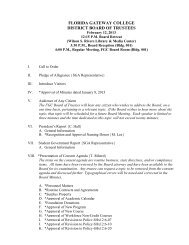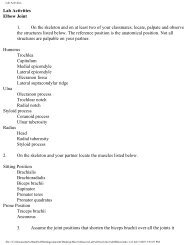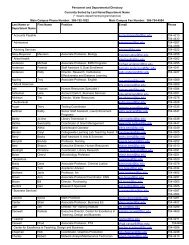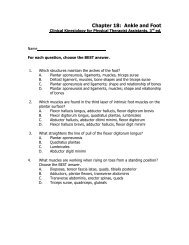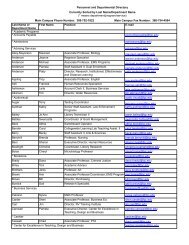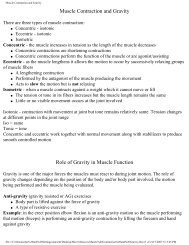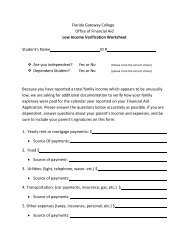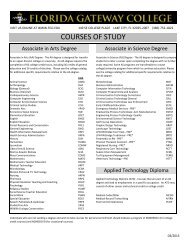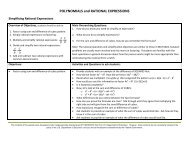Biomechanics
Biomechanics
Biomechanics
You also want an ePaper? Increase the reach of your titles
YUMPU automatically turns print PDFs into web optimized ePapers that Google loves.
<strong>Biomechanics</strong><br />
Example: A book on the table has two forces<br />
1. Gravity’s downward force = weight of the book<br />
2. Table exerts an upward force = weight of book.<br />
Sum of net forces = zero, therefore the book is in equilibrium<br />
Primary forces which act on the human body are:<br />
Gravity Externally applied resistance<br />
Muscle Contraction Friction<br />
Force System<br />
● Identification of all the forces acting on an object<br />
● Linear force system = all forces are in the same line<br />
● Parallel force system = two or more parallel forces acting on the same object but at some<br />
distance from each other. The lever system is this type.<br />
● Lever = Rigid bar that can rotate about a fixed point when a force is applied (bones)<br />
● Axis = fixed point about which the lever rotates<br />
● Weight = resistance that must be overcome<br />
● Force = usually muscular contraction in the human body<br />
● Weight arm = (resistance) distance between the fulcrum and the weight<br />
● Force arm = distance between the fulcrum and the force<br />
Lever Systems – 1 st , 2 nd , and 3 rd class<br />
First Class Lever<br />
● The axis is located between the force and the weight (resistance)<br />
● Designed best for balance<br />
● Example: seesaw; atlanto-occipital joint<br />
Second Class Lever<br />
● Axis is located at one end, resistance is in the middle and the force at the opposite end<br />
● Designed best for power<br />
● Example: wheelbarrow; rising up on toes; PROM<br />
Third Class Lever<br />
● Axis is at one end, force is in the middle and the resistance at the opposite end<br />
● Designed for ROM (mobility); most common lever system in humans<br />
● Example: hinged door; normal muscle contraction<br />
Torque – when a force acts on a rigid bar (lever) it may cause a rotary motion around the fixed<br />
point (axis). Torque, or moment of force, is the measurement of the ability of a force to cause<br />
file:///C|/Documents%20and%20Settings/marsettt/Desktop/Mics%20saves/<strong>Biomechanics</strong>.htm (2 of 10)2/7/2007 3:30:21 PM






